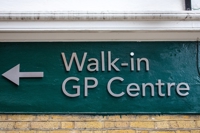
Contact tracing is a crucial tool in the fight against Covid-19. But take-up of mobile tracing apps has been conspicuously low across Europe. Why is this? And what’s the solution? In both cases, behavioural economics holds the answer.
When the virus first hit, many countries responded by imposing temporary lockdowns. As these measures eased, medical experts and the WHO urged governments to set up mechanisms to monitor social contacts and break the chain of contagion. As a result, many countries developed mobile applications to track contact between people.
Vaccines are now rolling out. But this takes time, and the WHO has warned that vaccination won’t confer herd immunity in the short run – instead, it will have to coexist with current containment measures for at least ‘the rest of this year’. Contact tracing therefore remains one of our most important methods of containing the virus.
People aren’t downloading tracing apps
In order for contact tracing apps to work effectively, each user must successfully carry out four steps: download, carry, report and react.
Figure 1

Source: Frontier Economics
But data from Europe suggests that high numbers of people are falling at the first hurdle – they are not downloading the app. As of November 2020, the penetration of tracing apps was well below 50% across most of Europe, and even below 15% in places like Spain and France, where the virus has hit hard. These figures are far below the 60% minimum threshold required to make tracing apps successful.
Figure 2: Percentage of people who have downloaded tracing apps, by country
Source: Frontier Economics
So why is take-up so low across so many countries?
Network effects, technical issues and economic barriers play a part
There are some challenges that are inherent in creating a tracing system – issues with the system itself, rather than with the behaviour of potential users.
The network effect, for example, must be overcome. The advantage a user derives from the app increases with the number of people who use it. In other words, having a tracing app is worthless unless the people you come into contact with have it too. Achieving a critical mass of users is therefore vital to provide enough incentive for people to install the app – ‘if no one else is using it, what is the point of downloading it?’
There are also technical barriers to downloading tracing apps, which relate to how each one is designed and built. These include how much battery the app consumes, its data storage architecture (centralised or decentralised), transparency (e.g. whether open-source code is available), and privacy (e.g. if data is collected anonymously).
These barriers are interrelated. For example, under a centralised data storage system the government collects all data on central servers. This may discourage people worried about privacy from using the app. As a result, many tracing apps use decentralised systems, which store data directly on users’ phones.
Economic barriers exist too. Not everybody has a phone with access to the internet. Although penetration of mobile internet is generally very high in Europe, in some countries (like Hungary, Portugal and Belgium) it was below 80% in 2020.
What’s more, those who do own a smartphone may be concerned that the app will increase their data consumption, at a personal cost to them.
Several measures have been suggested, and introduced, to overcome these barriers. These include ‘zero-rating’ the data used by tracing apps, and temporarily increasing the size of data packages. The main mobile operators in the UK, for example, are supporting NHS Covid-19 app users by waiving internet charges for all activity related to the app. This is also the case for the Radar COVID app in Spain.
The biggest barriers to uptake are behavioural
Technical and economic challenges do, therefore, affect uptake. But they do not represent the biggest barriers to it.
Instead, the solution to improving penetration of mobile tracing apps lies in changing the behaviour of potential users.
At Frontier, we specialise in the application of behavioural economics. And in the case of contact tracing apps, we’ve identified two key behavioural barriers:
Miscalculation of costs and benefits
None of us have had to decide whether to download a contact tracing app before. We can’t draw information from past experiences, so must make the decision based on perceived costs and benefits.
Evidence suggests that people might perceive the risks of downloading an app to be higher than they actually are. For example, in a UK focus study undertaken in May 2020, data privacy and security were the most commonly stated concerns about downloading the NHS app. But these concerns were often based on misconceptions. Many mistakenly believed, for instance, that the app allowed users to identify who among their contacts, or in their vicinity, had tested positive or had symptoms.
It also takes time for the benefits of downloading an app to be felt by individuals – this only happens once the app has been taken up sufficiently. But the perceived costs – data consumption, loss of privacy – are likely to be felt from the beginning. It is well documented that we tend to prioritise immediate gratification over long-term wellbeing – this is called hyperbolic discounting. And this behavioural pattern is likely to shift the balance of the decision against downloading the app.
And perception of risks can be accentuated by misinformation, especially in a world where fake news travels six times faster than the truth.
Awareness and information overload
Even if developers created the perfect app, it would be wasted if people didn’t know about it. Given the 60% penetration threshold, it is vital that as many people as possible are aware tracing apps exist, and know why they are important. A number of participants in the May 2020 UK study, for example, had not heard of contact tracing.
But the same study suggests information overload is also a danger – people are getting ‘sick and tired of hearing more of coronavirus’. Information overload can encourage the spread of fake news, which in turn feeds back into the ‘miscalculation’ barrier. Communication is therefore key, and it’s important to think carefully about how to communicate and what channels to use.
Behavioural economics holds the answer
No matter what is done to develop the technology, or to remove economic barriers, tracing apps are unlikely to be taken up in the required numbers as long as these behavioural challenges are left untackled. So what can be done?
Behavioural economics provides a number of possible solutions.
- Defaults can be employed to tackle awareness problems. UBI Banca, a large Italian bank, automatically installed tracing apps on its employees’ company phones, and IE Business School in Madrid obliges everyone on campus to download Radar COVID before entering any campus building.
- Nudges can also be used to make people more aware of tracing apps. These may take the form of communications, like sending an SMS with a download link to people in areas where contagion is higher. Or they could involve gamification – applying game-design elements to apps – to increase uptake among younger generations.
- Reward schemes and lotteries can help to minimise the effect of miscalculation. Offering a reward for using the app can counter the miscalculation of risk by increasing the perceived benefit. For instance, Bahrain’s tracing app, BeAware, allows its users to automatically participate in daily draws organised by a TV programme.
Frontier’s five-step framework
These are just a few examples of low-cost initiatives that could be taken. To design a more comprehensive behavioural strategy, and to ensure initiatives have the best possible chance of working, a structure like Frontier’s five-step behavioural economics framework could be applied to policymaking:
Figure 3: Frontier’s five-step behavioural economics framework

Source: Frontier Economics
A vital issue for the present – and the future
Covid-19 is the first pandemic to take place in the era of smartphones. Tracing apps are a resource we’ve never previously had access to, and one that may prove to be our most effective solution yet in breaking the chain of contagion.
Their development could not only be the key to stopping the spread of the current pandemic, but could also become a precedent for the future. It’s vitally important that we use the insights offered by behavioural economics to get them right.










